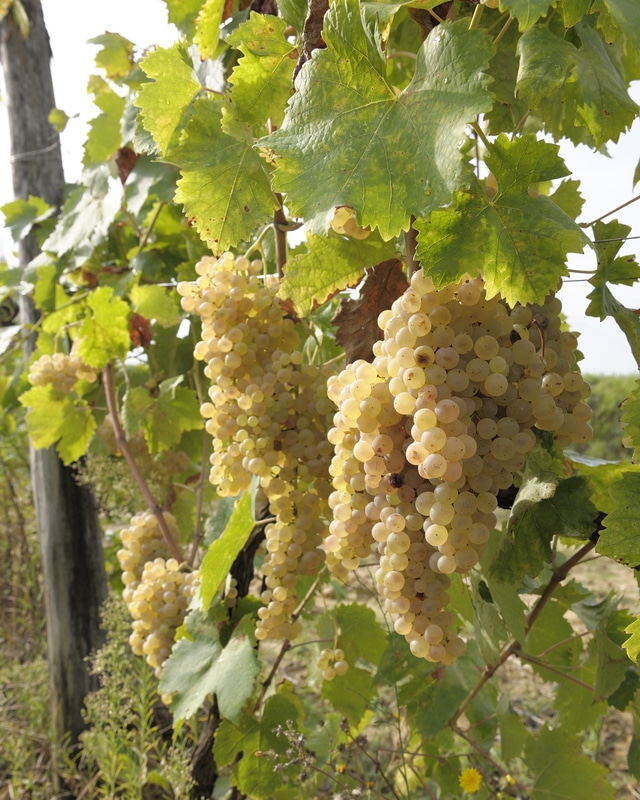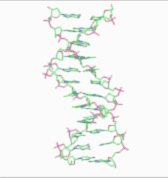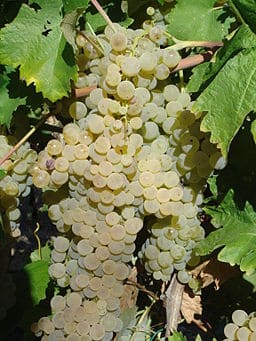Search
Menu

 Trebbiano is the second most planted grape variety in Italy. Or is it? The answer depends on how liberal your definition of Trebbiano is, because there are several different subtypes of Trebbiano around Italy—and it appears that most of them are not really related. [Ed. note: Since this article was written, Pinot Grigio plantings have skyrocketed, and Trebbiano has fallen to third place.]
Trebbiano is the second most planted grape variety in Italy. Or is it? The answer depends on how liberal your definition of Trebbiano is, because there are several different subtypes of Trebbiano around Italy—and it appears that most of them are not really related. [Ed. note: Since this article was written, Pinot Grigio plantings have skyrocketed, and Trebbiano has fallen to third place.]
A study by Massimo Labra of the University of Milan and his colleagues in 2001 (published in Vitis, vol. 40) examined the question of how tight-knit the Trebbiano family is and whether some other grapes that look like Trebbiano are in fact long-lost members of the family. The results actually ended up showing that—with a couple of exceptions—all the Trebbiano siblings are adopted.
The study did a DNA analysis of seven Trebbianos from different regions in Italy: Trebbiano Abruzzese and Trebbiano di Spagna from Abruzzo, Trebbiano di Lugana from Lombardia, Trebbiano di Soave from Veneto, Trebbiano Romagnolo from Emilia-Romagna, Trebbiano Spoletino from Umbria, and Trebbiano Toscano from Toscana. In addition, 17 other grape varieties that had a very similar appearance were tested, including Bianchetta Trevigiana, Erbaluce, Falanghina, Grecanico Dorato, Grechetto, Greco, Montonico Bianco, and Verdicchio, plus Clairette and Petit Manseng from France and Verdejo from Spain.
 In short, Labra and colleagues concluded: “Results show a large degree of variability between most of the cultivars and suggest that they do not share a common ancestor.” The only samples that were proven to be genetically identical were Trebbiano di Soave and Marche’s Verdicchio, and both were very close matches with Trebbiano di Lugana. The study authors also noted an “interesting genetic relation” between the French grape Clairette and Piemonte’s Erbaluce, although it was more of the half-brother nature than twins.
In short, Labra and colleagues concluded: “Results show a large degree of variability between most of the cultivars and suggest that they do not share a common ancestor.” The only samples that were proven to be genetically identical were Trebbiano di Soave and Marche’s Verdicchio, and both were very close matches with Trebbiano di Lugana. The study authors also noted an “interesting genetic relation” between the French grape Clairette and Piemonte’s Erbaluce, although it was more of the half-brother nature than twins.
The study report summarized some of the disparate theories on the origin of the name Trebbiano, noting various towns of that name around Italy and Pliny the Elder’s mention of a Campanian grapevine he called vinum trebulanum. However, the authors preferred the theory of Thomas Hohnerlein-Buchinger that the name came from the Franconian Draibio, meaning “vigorous shoot.” In other words, the name was not intended to identify a particular grape that came from a particular place, but rather to describe a broad category of grapes. Labra and colleagues elaborate: “The introduction of these vigorous and productive varieties can be considered to be a consequence of the agrarian policy of Charlemagne, who promoted a rapid renewal of medieval Italian viticulture after the crisis of the Roman empire.”
So, Trebbiano di Lugana and Trebbiano di Soave are the same as Verdicchio (as in Verdicchio dei Castelli di Jesi and Verdicchio di Matelica). But other than that, one Trebbiano is not necessarily the same as another.
 The 2010 agricultural census took this into account, mostly, and separately identified Trebbiano Abruzzese, Trebbiano di Soave, Trebbiano Romagnolo, Trebbiano Spoletino, and Trebbiano Toscano, as well as Trebbiano Giallo and Trebbiano Modenese. Trebbiano di Lugana was not separately identified and is probably included in the figures for Trebbiano di Soave. However, Verdicchio is still reported as a separate variety.
The 2010 agricultural census took this into account, mostly, and separately identified Trebbiano Abruzzese, Trebbiano di Soave, Trebbiano Romagnolo, Trebbiano Spoletino, and Trebbiano Toscano, as well as Trebbiano Giallo and Trebbiano Modenese. Trebbiano di Lugana was not separately identified and is probably included in the figures for Trebbiano di Soave. However, Verdicchio is still reported as a separate variety.
If Trebbiano is treated as several confusingly named varieties rather than as one unit, then it disappears as the second most planted grape variety in Italy (with 55,000 hectares/135,000 acres). Trebbiano Toscano emerges as the fifth most planted variety by itself, with 21,500 hectares (53,100 acres) of vineyards—not to mention about four times that much in France, where Trebbiano Toscano is known as Ugni Blanc. Trebbiano Romagnolo would be #11 in Italy at 15,900 hectares (39,260 acres), and Trebbiano Giallo is also a significant entry at 10,600 hectares (26,200 acres).
The problem is that many disciplinari (denomination wine laws) do not specify which kind of Trebbiano is required, so presumably anything named Trebbiano will do. Thus, it’s impractical at this point to permanently divide the Trebbiano “family” into its component parts. As with many things in Italian wine, we’ll have to live with a little vagueness for at least a while longer.
Jack, I have had many Trebbianos over the years from many regions of Italy, but I just opened my very first Trebbiano Romagnolo from Rubicone IGP in Emilia-Romagna, so I thought it was time to refresh my knowledge about the many subtypes and cultivars and mis-named Trebbianos, so I enjoyed your article (and the wine) very much. RICK